Newsworthy stories: What made Automotive News’ No. 1 news story of the year for 2017? “Virtually every automaker becomes an EV evangelist,” is the lead story,  even though EVs didn’t even make the the top 10 for the previous year. More than 100 battery-electric models will be sent to dealerships globally within five years. Its become easier to list which automakers don’t have big plans for EVs in the near future. Cheaper batteries will drive it, along with several countries saying they’ll ban gasoline-powered vehicles within a few decades…………… LeEco CEO Jia Yueting had been ordered by Chinese regulators to return to China before the end of 2017, but did not make that appearance. Jia had said he’d stayed in the U.S. to do fundraising for his other electric car company, Faraday Future. The Beijing branch of the China Securities Regulatory Commission (CSRC) issued a notice last week ordering the CEO to return to China to address mounting debt and to protect investors’ rights. Jia said he’d asked his brother, Jia Yuemin, to meet with the commission last Friday to provide a report. “I am deeply sorry and blame myself for the negative impact of LeEco’s debt crisis. The fundraising for Faraday Future in the United States is making significant progress and there are many tasks I need to push forward in order to ensure the production and timely delivery of the FF91,” he said in a statement…………. Lyft will be showing off an autonomous ride-hailing service at CES in Las Vegas later this month, in partnership with Aptiv Plc and its automated driving platform. Aptiv was launched in December when auto supplier Delphi Automotive split into two companies. Lyft and Aptiv will offer rides to attendees at CES in the “point-to-point” ride-hailing system utilizing Lyft’s mobile app and Aptiv’s platform. Lyft is poised to play a leading role in working with technology partners to tap into the ride-hailing firm’s resource of providing about one million rides per day. Analysts predict that autonomous ride-hailing and ridesharing mobility services will lead the way in adoption of self-driving cars.
even though EVs didn’t even make the the top 10 for the previous year. More than 100 battery-electric models will be sent to dealerships globally within five years. Its become easier to list which automakers don’t have big plans for EVs in the near future. Cheaper batteries will drive it, along with several countries saying they’ll ban gasoline-powered vehicles within a few decades…………… LeEco CEO Jia Yueting had been ordered by Chinese regulators to return to China before the end of 2017, but did not make that appearance. Jia had said he’d stayed in the U.S. to do fundraising for his other electric car company, Faraday Future. The Beijing branch of the China Securities Regulatory Commission (CSRC) issued a notice last week ordering the CEO to return to China to address mounting debt and to protect investors’ rights. Jia said he’d asked his brother, Jia Yuemin, to meet with the commission last Friday to provide a report. “I am deeply sorry and blame myself for the negative impact of LeEco’s debt crisis. The fundraising for Faraday Future in the United States is making significant progress and there are many tasks I need to push forward in order to ensure the production and timely delivery of the FF91,” he said in a statement…………. Lyft will be showing off an autonomous ride-hailing service at CES in Las Vegas later this month, in partnership with Aptiv Plc and its automated driving platform. Aptiv was launched in December when auto supplier Delphi Automotive split into two companies. Lyft and Aptiv will offer rides to attendees at CES in the “point-to-point” ride-hailing system utilizing Lyft’s mobile app and Aptiv’s platform. Lyft is poised to play a leading role in working with technology partners to tap into the ride-hailing firm’s resource of providing about one million rides per day. Analysts predict that autonomous ride-hailing and ridesharing mobility services will lead the way in adoption of self-driving cars.
What declining oil prices mean: Shale oil drillers have become good enough at what they due to bring record highs to U.S. crude oil production, according to a Washington Post feature.
 Shale oil drills can now plunge deep, pivot, and tunnel sideways for miles until they find an oil pocket, said Frank Verrastro, senior vice president at the Center for Strategic and International Studies.
Shale oil drills can now plunge deep, pivot, and tunnel sideways for miles until they find an oil pocket, said Frank Verrastro, senior vice president at the Center for Strategic and International Studies.
Here a few trends to follow on the impact of U.S. oil production capacity:
- Global oil demand is increasing in an expanding world economy, and production cutbacks by Russia and OPEC nations have helped push the price of a barrel of oil above $60 in recent days.
- Trump administration policies, along with bountiful supply from shale oil drills and hydraulic fracturing (fracking), are expected to keep oil and gasoline prices down in the U.S. Trump administration has approved the controversial Keystone XL pipeline and may be loosening offshore oil drilling regulations. Another move could come from the tax bill that was just approved on Dec. 22; it allows oil drilling in the Arctic National Wildlife Refuge in Alaska, a potentially rich oil supply but a move that conservationists and environmentalists oppose.
- This trend will be increasing U.S. energy independence even more, taking away the type of pressure felt during the 1970s during the OPEC oil embargoes.
- High gas and diesel prices have been critical selling points for the marketing of electric and alternative fuel vehicles. As Tesla and a few competitors have found, there are other strong points to make and experiences to offer car shoppers. Driving one of the cars is the best one, and answering questions about the environmental gains made in air pollution and greenhouse gas emissions; plus savings in lifecycle costs even if gas prices stay down through this year.

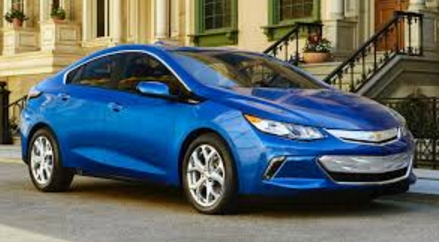 vehicles like the Chevrolet Bolt.
vehicles like the Chevrolet Bolt. 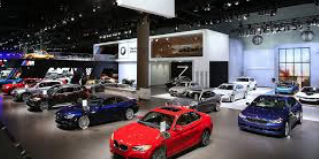 revised strategy being tried out at auto shows is having on car shopping. Events such as the LA Auto Show have been less about the wonders of far-out advanced technology, and more about bringing to life the innovations found in today’s vehicles. Learning more about the new vehicles and their capabilities goes far beyond those visiting the showrooms, with millions of consumers gaining digital access to the car shows online. Cars are coming equipped with interactive systems like Apple’s Siri and Amazon’s Alexa that allow for verbal commands and touch screens simplifying the process — and getting car owners to see new possibilities coming through the technology. Connected car systems are expected to be the gateway to fully autonomous vehicles coming to roads over the next decade. Today, drivers can tap into mobility functions to manage charging their electric vehicle through voice commands, and to find out about available public charging spots.
revised strategy being tried out at auto shows is having on car shopping. Events such as the LA Auto Show have been less about the wonders of far-out advanced technology, and more about bringing to life the innovations found in today’s vehicles. Learning more about the new vehicles and their capabilities goes far beyond those visiting the showrooms, with millions of consumers gaining digital access to the car shows online. Cars are coming equipped with interactive systems like Apple’s Siri and Amazon’s Alexa that allow for verbal commands and touch screens simplifying the process — and getting car owners to see new possibilities coming through the technology. Connected car systems are expected to be the gateway to fully autonomous vehicles coming to roads over the next decade. Today, drivers can tap into mobility functions to manage charging their electric vehicle through voice commands, and to find out about available public charging spots.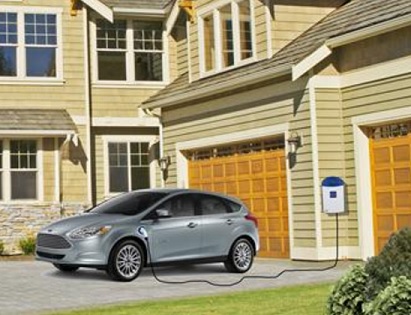 will still be able to claim a tax credit up to $7,500 on the purchase. The 200,000 unit cap will still be in place with Tesla, General Motors, and Nissan expected to hit that ceiling sometime next year. Automakers and organizations such as CALSTART and Plug In America had been lobbying for inclusion of the tax credit, which had been initially cut from a House tax bill.
will still be able to claim a tax credit up to $7,500 on the purchase. The 200,000 unit cap will still be in place with Tesla, General Motors, and Nissan expected to hit that ceiling sometime next year. Automakers and organizations such as CALSTART and Plug In America had been lobbying for inclusion of the tax credit, which had been initially cut from a House tax bill. had argued that it merely provides a mobile app linking riders to car owners, and not a taxi or livery company. The case had come out after Barcelona ruled that Uber was to obey local taxi rules in that city. Uber downplayed the court ruling, saying that the company already operates under transportation laws in most European Union countries. Analysts say the ruling will have serious implications for Uber and other similar companies operating in the new gig economy. Uber and its new management team have a set of challenges to face after going through a difficult year.
had argued that it merely provides a mobile app linking riders to car owners, and not a taxi or livery company. The case had come out after Barcelona ruled that Uber was to obey local taxi rules in that city. Uber downplayed the court ruling, saying that the company already operates under transportation laws in most European Union countries. Analysts say the ruling will have serious implications for Uber and other similar companies operating in the new gig economy. Uber and its new management team have a set of challenges to face after going through a difficult year. played an order for 125 of Tesla’s new all-electric Semi tractors. It falls into the company’s extensive clean transportation fleet that includes vehicles powered by electricity, natural gas, and propane. Tesla Semis are poised to usher in a new era in improved safety, reduced environmental impact, and reduced cost of ownership, UPS said in a statement. Last week, PepsiCo Inc. had placed the largest Semi order with Tesla at 100 units in its efforts to reduce fuel costs and fleet emissions.
played an order for 125 of Tesla’s new all-electric Semi tractors. It falls into the company’s extensive clean transportation fleet that includes vehicles powered by electricity, natural gas, and propane. Tesla Semis are poised to usher in a new era in improved safety, reduced environmental impact, and reduced cost of ownership, UPS said in a statement. Last week, PepsiCo Inc. had placed the largest Semi order with Tesla at 100 units in its efforts to reduce fuel costs and fleet emissions. Group, will become chairman of the high-speed transportation company. Branson joined the board of directors in October after Virgin Group invested in the company. The company has also completed its third phase of testing achieving historic test speeds of 387 kilometers per hour (240.4 miles per hour). Branson is internationally known for achievements in air, rail, and space transportation, and his commitment to sustainability.
Group, will become chairman of the high-speed transportation company. Branson joined the board of directors in October after Virgin Group invested in the company. The company has also completed its third phase of testing achieving historic test speeds of 387 kilometers per hour (240.4 miles per hour). Branson is internationally known for achievements in air, rail, and space transportation, and his commitment to sustainability.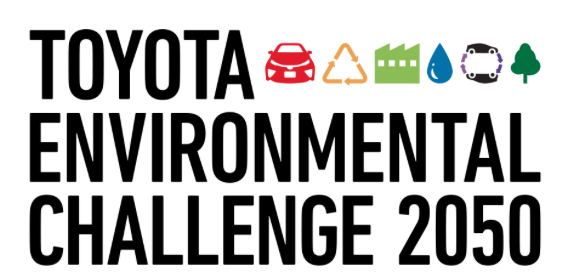 vehicles (all-electric and fuel cell vehicles). By 2025, the automaker will have every Toyota and Lexus model available as a dedicated electrified vehicle or it will have an electrified option available. Electrified options include all-electric, plug-in hybrid, fuel cell, or hybrid. During the 2020s, the PHEV lineup will be expanded and more than 10 battery electric vehicle models will be available worldwide by the early 2020s; and passenger and commercial FCEVs will be expanded during that time period. Hybrids will receive further development of the Toyota Hybrid System II. It all ties into the Toyota Environmental Challenge 2025 addressing global warming, air pollution, and limited natural resources and energy supply.
vehicles (all-electric and fuel cell vehicles). By 2025, the automaker will have every Toyota and Lexus model available as a dedicated electrified vehicle or it will have an electrified option available. Electrified options include all-electric, plug-in hybrid, fuel cell, or hybrid. During the 2020s, the PHEV lineup will be expanded and more than 10 battery electric vehicle models will be available worldwide by the early 2020s; and passenger and commercial FCEVs will be expanded during that time period. Hybrids will receive further development of the Toyota Hybrid System II. It all ties into the Toyota Environmental Challenge 2025 addressing global warming, air pollution, and limited natural resources and energy supply. Energy Finance has projected that total annual global sales will exceed 1 million units for the first time in 2017. About 287,000 units were sold in the third quarter, up 63% over Q3 2016. China has seen about half of these sales as the government continues to incentive new energy vehicles and automakers roll out more offerings.
Energy Finance has projected that total annual global sales will exceed 1 million units for the first time in 2017. About 287,000 units were sold in the third quarter, up 63% over Q3 2016. China has seen about half of these sales as the government continues to incentive new energy vehicles and automakers roll out more offerings.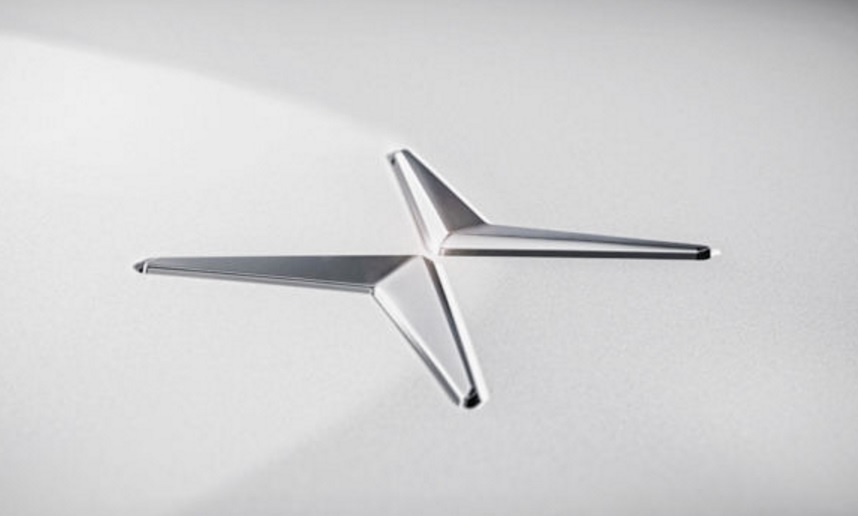 subscription service. The company said that since the launch in October, enthusiasm has been high enough to sell off the early production volume. The first model, the Polestar 1, will be start production in mid-2019 at a new factory in Chengdu, China. The monthly subscription cost will be $2,000 for the entry-level Launch package that covers registration, insurance, and maintenance, with no deposit required. The Polestar 1 has a 600 horsepower electric performance hybrid powertrain. It will be the longest running battery-only plug-in hybrid out there with the ability to go 150 kilometers (93.2 miles) on battery power.
subscription service. The company said that since the launch in October, enthusiasm has been high enough to sell off the early production volume. The first model, the Polestar 1, will be start production in mid-2019 at a new factory in Chengdu, China. The monthly subscription cost will be $2,000 for the entry-level Launch package that covers registration, insurance, and maintenance, with no deposit required. The Polestar 1 has a 600 horsepower electric performance hybrid powertrain. It will be the longest running battery-only plug-in hybrid out there with the ability to go 150 kilometers (93.2 miles) on battery power. California Air Resources Board for its 2018 L9N and B6.7N natural gas engines. Both engines meet CARB optional Low NOx standards, as well as 2017 EPA greenhouse gas emission requirements. That makes them some of the cleanest engines available today for truck and bus customers, according to the company. It will be of interest to truck and bus fleets investing in powertrains for future vehicles tapping into the full emission-reduction benefits of renewable natural gas. The L9N is certified to the CARB optional Low NOx standard of 0.02 g/bhp-hr ‒ a 90% reduction from engines operating at the current EPA NOx limit of 0.2 g/bhp-hr, and is available with ratings from 250 to 320 horsepower and 1,000 lb.-ft. peak torque. The B6.7N is certified to the CARB optional Low NOx standard of 0.1 g/bhp-hr – a 50% reduction from current EPA levels. It’s available with ratings from 200 – 240 hp and 560 lb.-ft. peak torque.
California Air Resources Board for its 2018 L9N and B6.7N natural gas engines. Both engines meet CARB optional Low NOx standards, as well as 2017 EPA greenhouse gas emission requirements. That makes them some of the cleanest engines available today for truck and bus customers, according to the company. It will be of interest to truck and bus fleets investing in powertrains for future vehicles tapping into the full emission-reduction benefits of renewable natural gas. The L9N is certified to the CARB optional Low NOx standard of 0.02 g/bhp-hr ‒ a 90% reduction from engines operating at the current EPA NOx limit of 0.2 g/bhp-hr, and is available with ratings from 250 to 320 horsepower and 1,000 lb.-ft. peak torque. The B6.7N is certified to the CARB optional Low NOx standard of 0.1 g/bhp-hr – a 50% reduction from current EPA levels. It’s available with ratings from 200 – 240 hp and 560 lb.-ft. peak torque.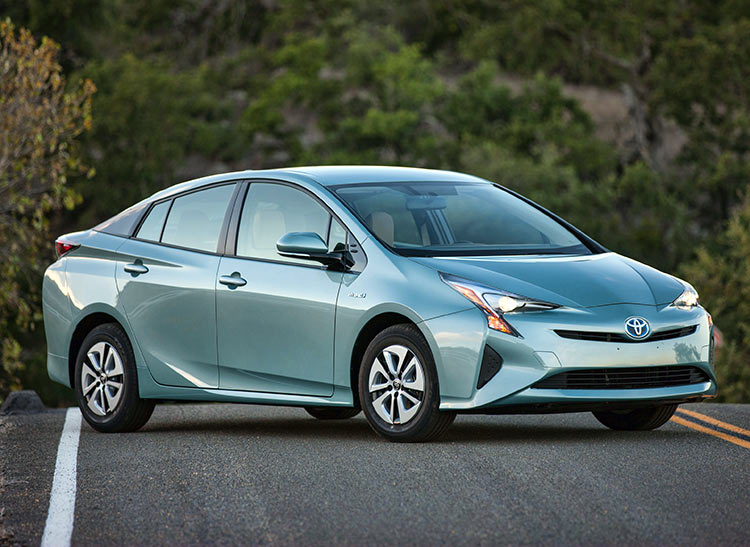 Analysis results today showing a change in the market over the past year with consumers finding more options in fuel-efficient hybrids. The percentage of cost-effective hybrids has increased 16 percentage points compared to the 2016 study. For 26 of the 65 hybrids evaluated, or 40%, these hybrids have a lower total cost of ownership compared to their closest all-gasoline powered counterpart. Since 2012 the percentage of cost-effective hybrids had steadily decreased with the trend changing this year. Luxury hybrids had the highest percentage of cost-effective hybrids at 46%, The Lexus CT200h had the largest savings in the study, showing that buyers could save $7,750 over five years of ownership compared to the similarly equipped Lexus IS 200t.
Analysis results today showing a change in the market over the past year with consumers finding more options in fuel-efficient hybrids. The percentage of cost-effective hybrids has increased 16 percentage points compared to the 2016 study. For 26 of the 65 hybrids evaluated, or 40%, these hybrids have a lower total cost of ownership compared to their closest all-gasoline powered counterpart. Since 2012 the percentage of cost-effective hybrids had steadily decreased with the trend changing this year. Luxury hybrids had the highest percentage of cost-effective hybrids at 46%, The Lexus CT200h had the largest savings in the study, showing that buyers could save $7,750 over five years of ownership compared to the similarly equipped Lexus IS 200t.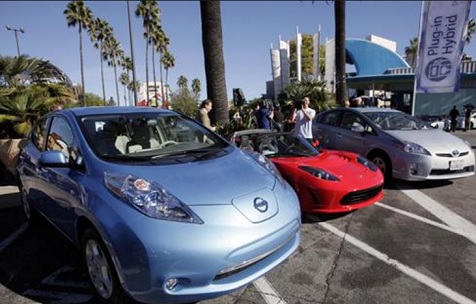 ozzella, president of the Association of Global Automakers, made the argument that California is favoring electric and fuel cell vehicles over more practical advanced gasoline engines, lighter materials, and other technologies to reduce fuel consumption and greenhouse gas emissions. While automakers have supported the ZEV mandate adopted by California and nine other states, automakers are hoping the Trump administration and Congress will soften he standards. ”The ZEV program produces no incremental nationwide GHG emission benefits despite the high burden placed on vehicle manufacturers. Current corporate average fuel economy and GHG emissions standards already specify each manufacturer’s total fleet-wide emissions, and therefore, in a system that averages together all vehicles in a manufacturer’s fleet, the fleet-wide emissions standards act as a cap when combined with an overall compliance fleet strategy,” Bozzella said.
ozzella, president of the Association of Global Automakers, made the argument that California is favoring electric and fuel cell vehicles over more practical advanced gasoline engines, lighter materials, and other technologies to reduce fuel consumption and greenhouse gas emissions. While automakers have supported the ZEV mandate adopted by California and nine other states, automakers are hoping the Trump administration and Congress will soften he standards. ”The ZEV program produces no incremental nationwide GHG emission benefits despite the high burden placed on vehicle manufacturers. Current corporate average fuel economy and GHG emissions standards already specify each manufacturer’s total fleet-wide emissions, and therefore, in a system that averages together all vehicles in a manufacturer’s fleet, the fleet-wide emissions standards act as a cap when combined with an overall compliance fleet strategy,” Bozzella said.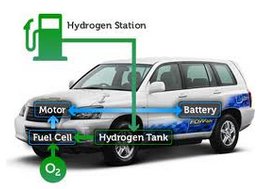 vehicle subsidies and pushing vehicle manufacturers to take light duty and heavy duty fuel cells more seriously. About 2,500 trucks and buses powered by hydrogen were deployed in 2017 compared to almost none in 2016. China faces a real challenge seen in other countries – there are only seven hydrogen fueling stations in the country with range limitations placed on the fuel cell vehicles. About 30% more fuel cell power globally was shipped in 2017 than 2016, and nearly 10,000 more units, according the the study. The study looks at three fuel segments in global markets – portable units, stationary units that provide electricity to corporate customers, and transport that includes passenger vehicles like the Toyota Mirai and heavy-duty vehicles like fuel cell transit buses. Trains and marine markets are also explored in the report, with growth seen in both sectors.
vehicle subsidies and pushing vehicle manufacturers to take light duty and heavy duty fuel cells more seriously. About 2,500 trucks and buses powered by hydrogen were deployed in 2017 compared to almost none in 2016. China faces a real challenge seen in other countries – there are only seven hydrogen fueling stations in the country with range limitations placed on the fuel cell vehicles. About 30% more fuel cell power globally was shipped in 2017 than 2016, and nearly 10,000 more units, according the the study. The study looks at three fuel segments in global markets – portable units, stationary units that provide electricity to corporate customers, and transport that includes passenger vehicles like the Toyota Mirai and heavy-duty vehicles like fuel cell transit buses. Trains and marine markets are also explored in the report, with growth seen in both sectors. forward for mobility services, according to a new study by IHS Markit, Reinventing the Wheel: Mobility and Energy Future. Much of that will come from being by far the largest auto sales market in the world, with the consulting firm forecasting 28 million new vehicles to be sold there next year versus 17.1 million in the second largest global market, the U.S. Didi Chuxing is leading the way in that market for growth in app-based mobility services, as Uber and Lyft have done in the U.S. Electrified vehicles and development of autonomous vehicle technology will also play a part in China and other markets. China had more than 234,000 new energy vehicles (all-electric and plug-in hybrid electric vehicles) sold from January through September 2017, compared to over 140,000 unites in the U.S. market.
forward for mobility services, according to a new study by IHS Markit, Reinventing the Wheel: Mobility and Energy Future. Much of that will come from being by far the largest auto sales market in the world, with the consulting firm forecasting 28 million new vehicles to be sold there next year versus 17.1 million in the second largest global market, the U.S. Didi Chuxing is leading the way in that market for growth in app-based mobility services, as Uber and Lyft have done in the U.S. Electrified vehicles and development of autonomous vehicle technology will also play a part in China and other markets. China had more than 234,000 new energy vehicles (all-electric and plug-in hybrid electric vehicles) sold from January through September 2017, compared to over 140,000 unites in the U.S. market. global markets through an alliance with Hakim Unique Group, a Chinese company. The Fisker Orbit will come through the two companies designing, developing, and integrating the Fisker autonomous, electric shuttle into the first project, a smart city implemented by Hakim Unique. Fisker will start delivering the first Orbit shuttles by the end of 2018. It’s built around a shared vision in where public transportation will be going into smart cities of the future. That will come through infrastructure, design, and EV innovation, Fisker said.
global markets through an alliance with Hakim Unique Group, a Chinese company. The Fisker Orbit will come through the two companies designing, developing, and integrating the Fisker autonomous, electric shuttle into the first project, a smart city implemented by Hakim Unique. Fisker will start delivering the first Orbit shuttles by the end of 2018. It’s built around a shared vision in where public transportation will be going into smart cities of the future. That will come through infrastructure, design, and EV innovation, Fisker said.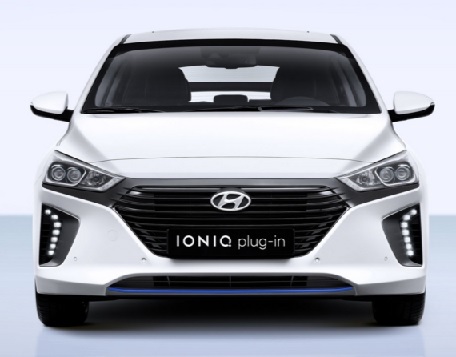 for the second year in a row in the 2018 Fuel Economy Guide with its 136 miles per gallon equivalent rating (MPGe). Published annually by the U.S. Department of Energy and Environmental Protection Agency, the guide is based on current model year vehicles. Some vehicles from last year, such as the BMW i3, didn’t make the list this year. Fuel economy information on some vehicles was not available in time to be printed in the guide. All electric vehicles are given an MPGe rating, and plug-in hybrids are ranked by their combined gasoline/electricity rating.
for the second year in a row in the 2018 Fuel Economy Guide with its 136 miles per gallon equivalent rating (MPGe). Published annually by the U.S. Department of Energy and Environmental Protection Agency, the guide is based on current model year vehicles. Some vehicles from last year, such as the BMW i3, didn’t make the list this year. Fuel economy information on some vehicles was not available in time to be printed in the guide. All electric vehicles are given an MPGe rating, and plug-in hybrids are ranked by their combined gasoline/electricity rating.